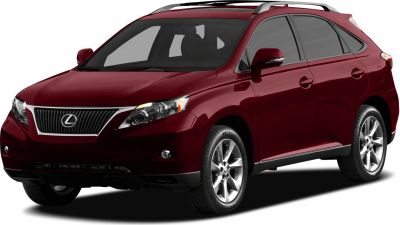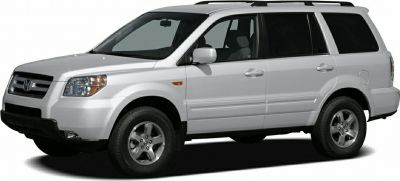 2010 Toyota 4Runner V Dimensions, Size & Specs
2010 Toyota 4Runner V Dimensions, Size & SpecsMeasurements of the 2010 Toyota 4Runner V, engineered for optimal performance and comfort
| Dimensions | |
|---|---|
| Length: | 4823 mm189.9 in15.8 ft |
| Width: | 1925 mm75.8 in6.3 ft |
| Height: | 1780 mm70.1 in5.8 ft |
| Ground Clearance: | 229-244 mm9.0-9.6 in0.8-0.8 ft |
| Trunk Capacity: | 255 liter9.0 cu ft |
| Trunk Capacity (Max): | 2515 liter88.8 cu ft |
| Weight Specifications | |
| Curb Weight: | 1948-2120 kg4295-4674 lbs |
| Maximal permitted Weight: | 2676-2858 kg5900-6301 lbs |
| Tire Specifications | |
| Rims Sizes: | 17-inch rims:
|
| Tire Sizes: |
|
The Toyota 4Runner V, produced from 2009 to 2013 and marketed as the 2010 model year, represents the fifth generation of this popular midsize SUV. With a robust design tailored for both on-road comfort and off-road capability, the 4Runner V continues Toyota's legacy of reliability and ruggedness.
Dimensionally, this generation measures 4823 mm (189.8 inches) in length, 1925 mm (75.8 inches) in width, and 1780 mm (70.1 inches) in height. These proportions give the 4Runner a commanding presence on the road while ensuring sufficient interior space for passengers and cargo. The curb weight ranges from 1948 to 2120 kg (4295 to 4677 lbs), reflecting different trim and equipment configurations. Maximum weight capacity spans between 2676 and 2858 kg (5899 to 6299 lbs), allowing for substantial load carrying capabilities.
The vehicle's ground clearance ranges from 229 to 244 mm (9.0 to 9.6 inches), making it well-suited for tackling off-road terrain with confidence. This elevated ride height improves approach and departure angles essential for rugged adventures. Also noteworthy is the luggage capacity of this generation, which offers 255 liters (9.0 cubic feet) of space with all seats in use. When the rear seats are folded, the cargo capacity expands greatly to 2515 liters (88.8 cubic feet), optimizing storage for larger gear or equipment.
The 4Runner V rides on a variety of rim sizes, including 7J x 17, 7.5J x 17, and 7.5J x 20 alloy wheels, paired with tires sized 265/70 R17 and 245/60 R20, depending on the model variant. These wheel and tire options balance ride comfort, traction, and off-road performance.
Overall, the Toyota 4Runner V (2010-2013) blends sizeable dimensions, practical cargo space, and solid off-road readiness, making it a versatile SUV choice for families, outdoor enthusiasts, and those seeking a reliable vehicle that performs well in diverse driving conditions.
Discover the standout features that make the 2010 Toyota 4Runner V a leader in its class
Have a question? Please check our knowledgebase first.
The 2010 Toyota 4Runner V generation measures 4823 mm (189.8 inches) in length, 1925 mm (75.8 inches) in width, and 1780 mm (70.1 inches) in height. These dimensions position the 4Runner as a midsize SUV with a robust and muscular stance, ideal for both urban driving and off-road adventures. The relatively wide body provides spacious interior accommodation, while its height contributes to commanding road presence and good ground clearance for rough terrains.
The curb weight of the Toyota 4Runner V generation ranges from 1948 kg to 2120 kg (approximately 4294 to 4674 lbs), depending on trim and configuration. This weight provides a solid, stable driving experience and contributes to the vehicle's off-road capability and towing strength. Heavier weight enhances road grip and stability but can slightly impact fuel efficiency and acceleration compared to lighter SUVs.
The maximum weight (gross vehicle weight rating) for the Toyota 4Runner V ranges from 2676 kg to 2858 kg (about 5900 to 6300 lbs). This measurement includes the total allowable combined weight of the vehicle, passengers, cargo, and any additional equipment. Such a capacity makes the 4Runner well-suited for carrying heavy loads, towing trailers, or off-road gear while maintaining safety and performance standards.
With all seats in place, the 2010 Toyota 4Runner V offers a luggage capacity of 255 liters (about 9 cubic feet), which is modest but typical for mid-sized SUVs focusing on passenger comfort. When the rear seats are folded down, the luggage capacity expands significantly to 2515 liters (approximately 88.8 cubic feet), providing ample space for large cargo loads and bulky items, making it versatile for both everyday commuting and adventurous trips.
The ride height (ground clearance) of the 2010-2013 Toyota 4Runner V ranges from 229 mm to 244 mm (9 to 9.6 inches). This generous ground clearance enables the vehicle to handle rough terrains, rocks, and uneven surfaces efficiently, reducing underbody damage. It also improves the SUV's ability to ford shallow water and climb over obstacles, reaffirming the 4Runner’s reputation as a capable off-roader.
Yes, the Toyota 4Runner V comes with a few tire and rim options. Rim sizes generally include 7J x 17 inches, 7.5J x 17 inches, and 7.5J x 20 inches. Tire sizes commonly range from 265/70 R17 to 245/60 R20. These options allow owners to choose between more rugged tires suited for off-roading or tires offering better comfort and road performance, depending on their preferred driving style.
Yes, the 2010 Toyota 4Runner V fits into a standard single-car garage, but with limited extra space. With a length of 4823 mm (189.8 inches) and a width of 1925 mm (75.8 inches), it occupies a significant portion of a typical garage space, which can be around 2.4 to 3.0 meters (8 to 10 feet) wide and 5 to 6 meters (16 to 20 feet) long. While it fits, tight clearances may require careful parking, especially with accessories like roof racks or large side mirrors.
The 5th generation Toyota 4Runner introduced in 2010 maintained many dimensional similarities with the 4th generation model but featured evolutionary design changes. The overall length of about 4823 mm (189.8 inches) and width near 1925 mm (75.8 inches) is slightly larger or on par with the 4th generation, offering a similarly spacious cabin and cargo area. The newer generation focused more on modern styling, improved off-road capability, and updated technology rather than radical size changes, ensuring continuity for loyal users while enhancing comfort and utility.
Compared to similar midsize SUVs from 2010, such as the Jeep Grand Cherokee, Ford Explorer, and Nissan Pathfinder, the Toyota 4Runner V stands out for its rugged build and off-road capabilities. Its length of 4823 mm (189.8 inches) and width of 1925 mm (75.8 inches) place it in line with these competitors, though its ground clearance of up to 244 mm (9.6 inches) is generally superior, highlighting its trail-ready advantage. While luggage space behind all seats is lower than some rivals, the significant expansion with folded seats (2515 liters or 88.8 cubic feet) makes it highly practical for cargo. The 4Runner is favored by buyers who need durable and versatile SUV performance more than urban luxury features.
The Toyota 4Runner V generation, produced from 2009 to 2013, is known for its solid body-on-frame construction, which distinguishes it from many crossover SUVs, contributing to superior durability and off-road performance. It comes with powerful V6 and optional V8 engines, reliable 4WD systems, and a sturdy suspension setup suitable for rough terrain. Safety features include multiple airbags and stability control. Its rugged design, ample ground clearance, and versatile cargo space make it a popular choice among adventure enthusiasts and families seeking a dependable, all-terrain vehicle with capable towing capacity and modern amenities.
Discover similar sized cars.

| Production: | 2009-2012 |
|---|---|
| Model Year: | 2010 |
| Length: | 4740-4770 mm186.6-187.8 in |
| Width: | 1885 mm74.2 in |
| Height: | 1725 mm67.9 in |

| Production: | 2024-present |
|---|---|
| Model Year: | 2026 |
| Length: | 4841 mm190.6 in |
| Width: | 2019 mm79.5 in |
| Height: | 1857 mm73.1 in |

| Production: | 2006-2008 |
|---|---|
| Model Year: | 2006 |
| Length: | 4775 mm188.0 in |
| Width: | 1968 mm77.5 in |
| Height: | 1811-1821 mm71.3-71.7 in |

| Production: | 2002-2005 |
|---|---|
| Model Year: | 2003 |
| Length: | 4775 mm188.0 in |
| Width: | 1964 mm77.3 in |
| Height: | 1793 mm70.6 in |

| Production: | 2011-2015 |
|---|---|
| Model Year: | 2012 |
| Length: | 4804 mm189.1 in |
| Width: | 2141 mm84.3 in |
| Height: | 1796 mm70.7 in |

| Production: | 2015-2019 |
|---|---|
| Model Year: | 2015 |
| Length: | 4803-4852 mm189.1-191.0 in |
| Width: | 2141 mm84.3 in |
| Height: | 1758-1796 mm69.2-70.7 in |

| Production: | 2023-present |
|---|---|
| Model Year: | 2023 |
| Length: | 4758 mm187.3 in |
| Width: | 1895 mm74.6 in |
| Height: | 1725 mm67.9 in |
